Summary: How to Orchestrate ABM Campaigns for B2B Buying Groups
To run a successful account-based marketing (ABM) campaign for buying groups, first identify all decision-makers within a target account and map their unique roles and priorities.
Then build coordinated, multi-channel campaigns that deliver personalized content to each stakeholder across email, ads, social, and sales touchpoints. Use shared intent data, buyer-stage triggers, and unified reporting to align marketing and sales teams around the same account goals.
The outcome: higher engagement, faster deal velocity, and measurable pipeline growth from the accounts that matter most.
Orchestrating ABM Campaigns for B2B Buying Groups
Look, B2B buying is a team sport. Marketing to a single “lead” in an account is like pitching to one person in a boardroom while ignoring everyone else.
In reality, 66% of B2B purchases involve 6+ people on the buying committee; often from different departments, but despite the nuances of the modern prospect journey, organizations fail to appreciate the diverse needs of the people they want to engage.
In this article, we’ll cover how you can move away from traditional marketing and sales efforts to buying group orchestration, a modern strategy that helps you break into target accounts faster, including enterprise accounts, and turn interest into pipeline.
Taking a more effective approach to account based marketing orchestration
Treating an account as one huge entity or focusing on just one champion neglects the complexity of modern deals, and this flaw in the old lead-centric model has become painfully clear:
- MQLs are only part of the picture: marketing-qualified leads (MQLs) are narrow and misleading if viewed in isolation. Companies fixated on MQLs alone often see opportunities fade away, with low lead-to-opportunity conversion, and deals with only one contact attached.
- Sales lacks visibility into the full buying team: marketing chases volume over quality, and sales lack critical context and exposure. MQLs alone “ignore the signals that matter”, the interactions of the entire group evaluating your solution.
- Longer sales cycles & missed signals: a one-lead approach results in a fragmented, stop-and-go customer journey. Critical context from other influencers is missing, causing delays and a poor buying experience.
- Missed opportunities with evolving businesses: other members of the buying group might research a product or problem independently (remember those 12+ content touches) without ever filling out a form.
Also, legacy ABM programs that only target a few known contacts completely miss new buying centers within an account, wasting marketing investment.
Buying groups, on the other hand, are perfect. Rather than a narrow, lead-focused approach, buying groups align sales and marketing activities, and provide a more accurate picture of supply and demand across the entire lifecycle.
Engaging buying groups can reveal 10–20% more opportunities lurking in your funnel that a lead-focused view would miss. It also greatly improves marketing-sales alignment. Instead of marketing generating leads and hoping sales follows up, both sales and marketing teams focus on the same set of people and coordinate their efforts.
Coordinated engagement plans for the whole buying group
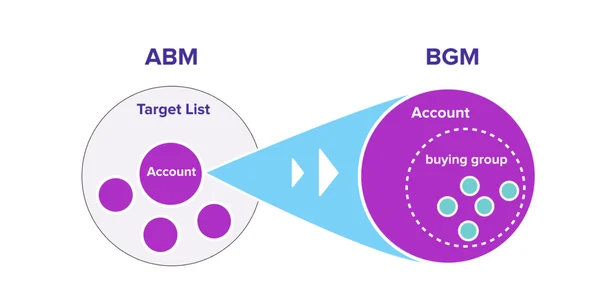
Winning complex B2B deals requires a coordinated, group-level engagement plan across marketing and sales teams. That much is clear today. However, this means treating buying groups as the unit of focus for campaigns and orchestrating touchpoints to reach each stakeholder involved.
So, what does coordinated, multithreaded engagement look like?
Start by mapping out who’s who in the buying group for your target account or opportunity (any existing customer data you might have can help here).
Identify the key players by name, title, role and influence: e.g. the economic buyer (perhaps the CEO or CFO), the champion/initiator, the end user leader (e.g. head of Sales or Ops), the technical evaluator (CTO/IT), and any gatekeepers (procurement, legal).
Existing account intelligence tools can research buying committees to help streamline the process.
Once stakeholders are identified, build an engagement plan that touches each of them through multiple channels over the sales cycle:
- Unified outreach cadence: coordinate marketing campaigns (content, ads, webinars, etc.) with sales/SDR outreach so that all stakeholders receive relevant touches in parallel.
For example, while an ABM ad or email campaign nurtures the group with thought leadership or downloadable content, an SDR might call or message the relevant directors, and an account executive might reach out to the VP/C-suite with a tailored value pitch or experience (e.g. a bespoke microsite, landing page, or ad campaign).
This way, everyone in the committee is informed and engaged around the same time, ultimately advancing and accelerating deals.
- Consistent, relevant messaging and varied tactics: ensure your team presents a consistent narrative across experiences (so your value proposition doesn’t sound disjointed), but uses varied tactics appropriate to each.
For example, target the technical evaluator with a custom demo or workshop addressing integration and security, invite the finance stakeholder to a session on product ROI, and send the champion a customer case study or use-case deck to share internally.
Maintain a feedback loop among your internal team. If the CTO asks a tough question, marketing can promptly provide content that answers it and arm sales with that insight.
- Shared visibility: use your CRM and marketing automation to give full visibility into engagement across the buying group. If one member downloads a whitepaper or another requests a trial, surface that insight to the account team immediately.
By packaging these signals and sharing with sales in real time, you avoid the scenario where each rep only sees pieces of interest.
Modern ABM platforms (often enhanced with AI) can automatically match leads to buying groups and leverage intent data to show how engaged specific contacts or accounts are.
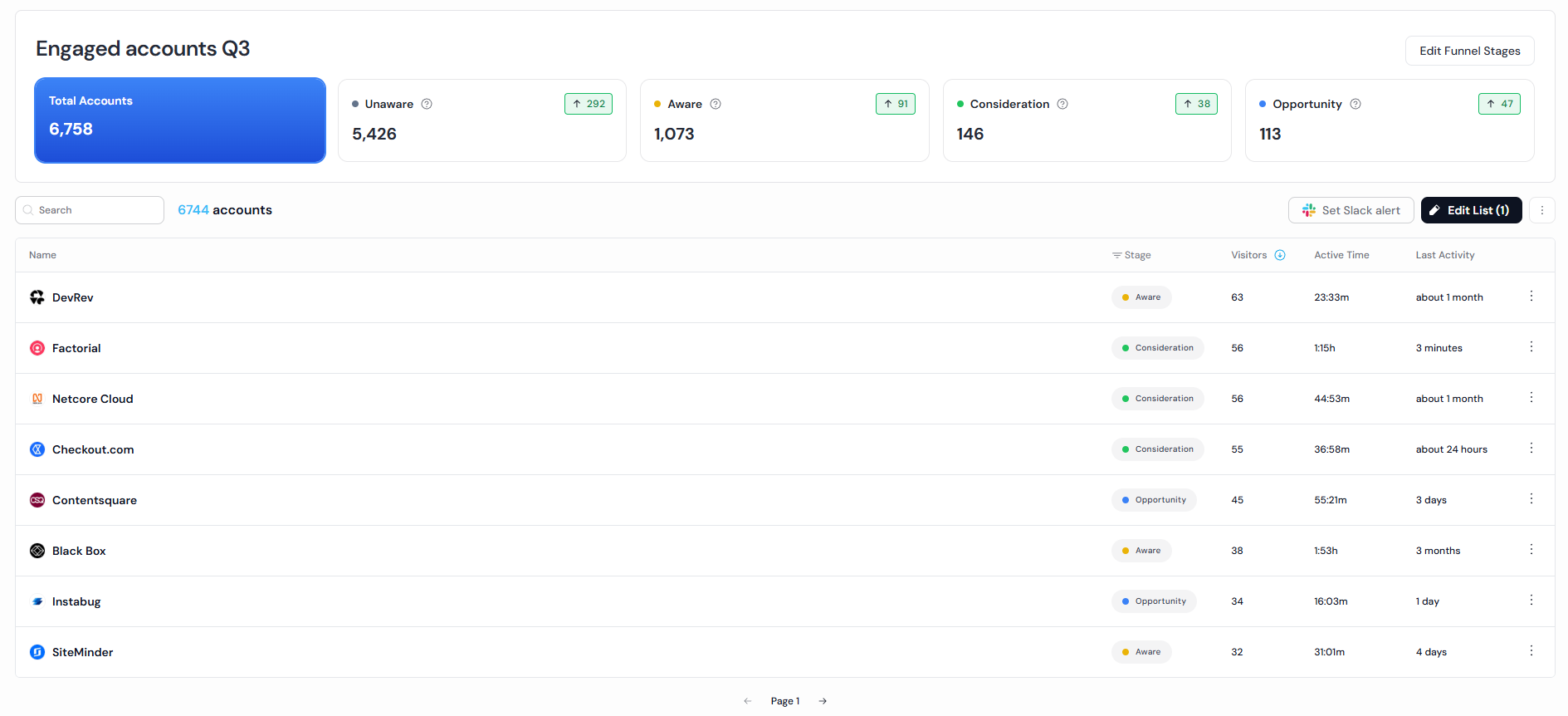
This connected approach prevents leads from falling through cracks and ensures timely follow-up with the entire buying unit.
Studies show that multithreading, building at least 5 active relationships in an account, can boost win rates from a meager 5% (single-threaded) to over 30%.
Similarly, Gartner predicts that organizations using multithreaded engagement will outperform competitors by 50% in revenue growth by 2026.
To put this in practice, consider using account plans or playbooks that explicitly list the target personas and the sequence of touches for each. For example, your plan for a target account might say:
- Week 1: CEO gets a personalized letter from our CEO, CTO invited to tech roundtable, CMO sees a targeted LinkedIn ad about customer experience.
- Week 2: Follow up with a case study email to end-users, SDR calls the finance director with an offer to share ROI data.
- Week 3: Send a personalized use-case demo and microsite to the CMO, provide a full list of integration capabilities to the end-users and CTO, and get existing customers and partners to advocate for you.
Finally, ensure you measure account engagement at the buying-group level. Instead of just counting one lead’s email opens, track metrics like number of engaged contacts per opportunity, the roles engaged, and their engagement depth (e.g. meetings attended, webinar attendance, demos booked, assets downloaded).
Personalization strategies tailored to each stakeholder
If you want to win over multiple stakeholders: one-size-fits-all messaging isn’t going to cut it. Each member of the buying group has different priorities and pain points, so your ABM strategy must deliver personalized content and experiences that speak to what each person cares about.
And the verdict is almost unanimous: statistics from Segment show that 89% of leaders believe that personalization is crucial to their business’ success over the next three years.
Here are tailored strategies for key buying group members often involved in B2B deals:
- Chief Executive (CEO / GM): focus on the big picture and business outcomes. The CEO will ultimately sign off if the solution aligns with strategic goals or transformative growth. Provide high-level thought leadership (e.g. industry trend reports) and ROI projections that show how your solution drives revenue, competitive advantage, or mitigates major risks.
Keep messaging concise and impact-focused. CEOs have limited time, so hit on solving top corporate priorities or creating long-term value. For example, share a one-page executive summary or a collection of results other organizations achieved with your product.
- Chief Marketing Officer (CMO): emphasize customer experience, pipeline impact, and market positioning. A CMO in the buying group will ask: “Will this help us reach customers better or build our brand?”
Tailor content to show how your solution increases demand gen efficiency, improves conversion, or provides insights into customer behavior. A compelling tactic is sharing case studies of marketing-led success – e.g. how another CMO used your platform to boost lead quality or accelerate campaigns.
- Chief Technology Officer / IT Lead (CTO/ CIO): address technical fit, integration, security, and scalability. IT wants to know if your product will work in their environment and not create headaches.
Provide detailed technical documentation, architecture diagrams, API integrations, and if possible a sandbox or demo environment.
Speak to their concerns: data security, compliance, compatibility with existing systems, and ease of deployment. A great approach is offering a technical workshop or Q&A with your product engineers to dive into the tech details.
- Chief Financial Officer / Procurement: finance cares about ROI, total cost of ownership, and risk mitigation. Arm champions with tools to satisfy CFO questions: a customized ROI calculator, a clear pricing breakdown, and examples of cost savings or efficiency gains other clients have seen.
Prepare documentation for procurement, too (e.g. compliance info, vendor security questionnaires) to remove roadblocks. Focus messaging on returns, risk aversion, and cost reduction.
- Marketing Director / Sales Director (or relevant department head): show how it empowers their team and outputs. If you’re selling a product for a particular department (sales, customer success, manufacturing, etc.), the head of that team is a crucial stakeholder. They want to know how it will make their team more effective or help improve KPIs.
Tailor your pitch to specific pain points: e.g. a Sales Director cares about hitting quota and insight into pipeline, so emphasize how your solution generates more qualified opportunities or provides sales with better data (perhaps via intent signals or account insights).
- User-Level Influencers: often, there are end-users or SMEs (subject-matter experts) who influence the decision. They’re the ones who work day-to-day with the product. Their focus is on usability and solving daily challenges.
To win them over, provide hands-on or on-demand demos, free trials, pilot programs, and other educational content (how tos, playbooks). Let them test features and give feedback at their own pace. End users can become strong advocates if they feel the solution genuinely makes their jobs easier.
Also, don’t shy away from multi-channel personalization. Engaging buying group members on their preferred channels, whether that’s LinkedIn, industry forums, email newsletters, or events, increases your chances of connecting.
Lastly, personalization is not only about content, but also about timing and context. Use intent data and behavior signals to gauge where each stakeholder is in their buying journey, then optimize campaigns accordingly.
Empowering an internal champion
Even with stakeholders aligned and engaged, deals often need someone on the inside advocating on your behalf. According to statistics from Gartner, deals are 3x more likely to close when champions are armed with the right content.
Here’s how you empower your champion:
- Arm them with resources they can easily share with the committee. This might include value proposition slide decks, product one-pagers for quick reference, ROI studies, calculators, procurement details, or FAQ documents addressing common IT/security concerns.
- Offer exclusive access to your solution, a pilot program for their team, or invite them to an executive briefing or workshop with your product leaders to see how they can extract the most value.
- Treat your champion as a partner. Work with them to understand internal dynamics, e.g. who else needs convincing, or what objections are floating around. Then help them strategize responses.
For instance, if the champion says, “Our CFO is concerned about the budget this quarter,” you can quickly supply a flexible pricing plan or a deferred payment option to overcome that.
Using AI to accelerate ABM at scale
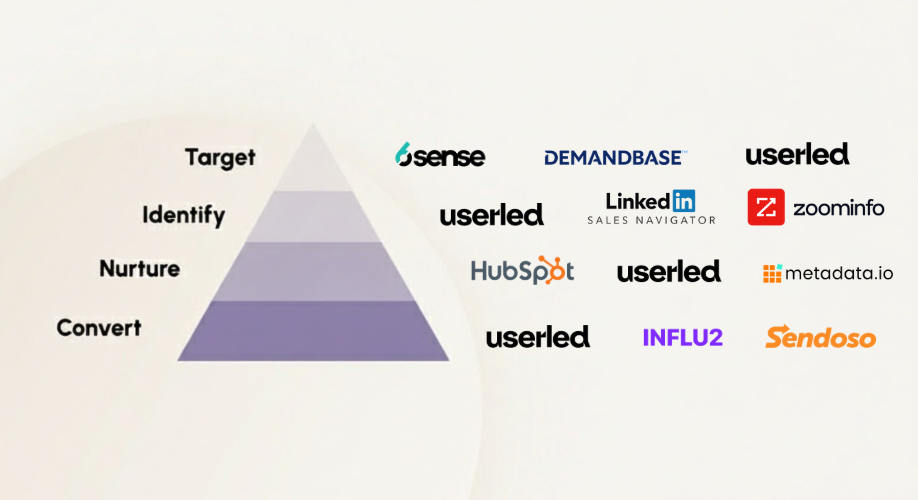
Unless your marketing team has a dedicated ABM department, complete with copywriters, graphic designers, and website developers, standing up an end-to-end campaign (microsites, landing pages, ad campaigns, downloadable assets, etc) can take months, and that’s a best-case scenario.
Then there’s capturing contact and account-level insights and sharing that behavior with the sales team so they can follow up in the moments that matter most. It’s a lot of work.
Fortunately, advancements in AI have made it possible for marketing teams to work faster and smarter. Today, most teams use AI-powered tools for account prioritization and selection based on contact-level interactions (with the most advanced breaking them down by buying groups). These tools then provide frameworks to help generate hyper-personalized content which, when engaged with, surfaces data to the relevant opportunity owner, so they can act.
Let’s have a look at how you can use AI to orchestrate buying groups:
Predictive targeting and dynamic ICPs
AI-powered analytics can crunch huge datasets (firmographics, technographics, engagement data, broader market signals) to predict which accounts are likely to be in-market or a good fit for your solution right now.
Instead of static ideal customer profiles, AI continually adjusts your target account list, flagging “lookalike” companies that resemble your best customers or have emerging pain points you solve. It also identifies “priority contacts” within those accounts based on intent data and/or function.
Surfacing intent signals:
Modern AI tools ingest intent data (e.g. web searches, content consumption patterns, third-party intent feeds) and correlate it with accounts and contacts in your CRM. They help solve the “buying group blindness” many teams struggle with.
Also, AI transcriber or call summary tools can capture information from regular sales conversations with stakeholders and insert it into the account’s CRM profile, giving the rest of the team crucial context. Sales calls are a goldmine of data for campaign optimization.
Content creation and personalization at scale:
Generative AI (like advanced language models) has matured to the point where it’s a practical assistant for ABM content. Teams are using AI to draft personalized emails, social posts, and even landing page variations tailored to different industries or roles, dramatically cutting down production time.
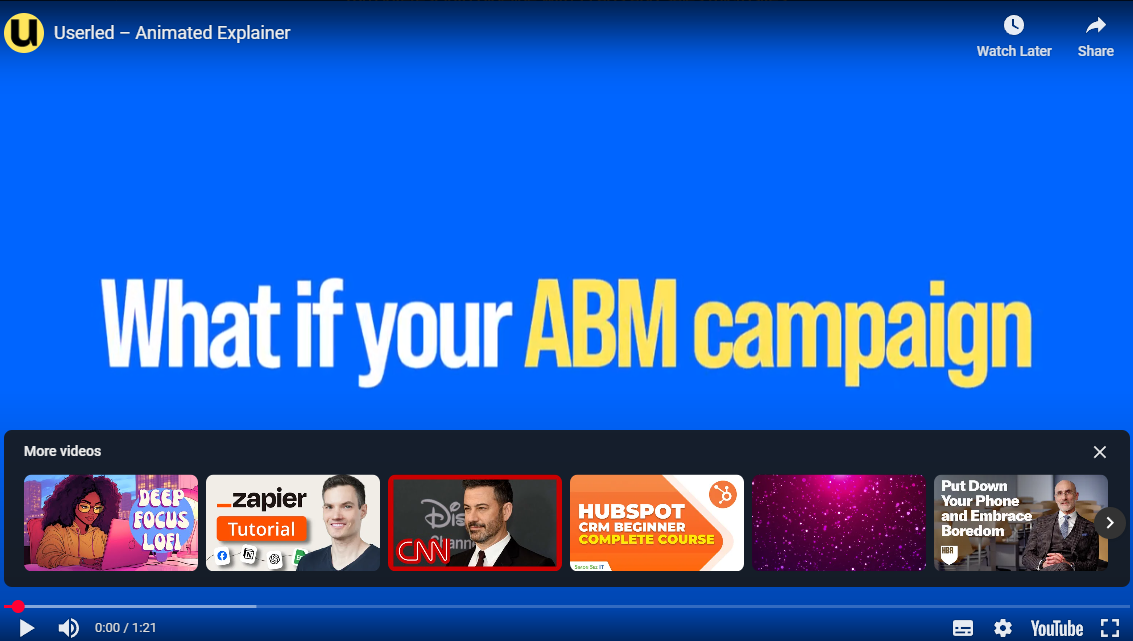
Campaign orchestration and optimization:
AI doesn’t just create content, it can also orchestrate when and how that content is delivered. AI-driven campaign platforms can determine the optimal channel and time to reach each contact (e.g. noticing that a particular exec often engages with LinkedIn in the mornings, or that a certain account responds better to webinars than email).
Sales enablement and next-best actions:
On the sales side, AI can function as a co-pilot, analyzing the engagement of the buying group and suggesting next-best actions for reps.
For instance, an AI assistant could remind a sales rep that “It’s been 7 days since the CTO of X account last engaged; consider sending a technical FAQ or inviting them to the upcoming user group webinar.” Or it might highlight, “Three members of the buying committee have not yet seen a demo. Schedule a session to loop them in.”
(Here’s a great piece if you need help making the business case for AI and ABM…)
From ABM to buying groups – the future of B2B engagement
In this piece, we covered how to coordinate multi-stakeholder engagement plans, personalize outreach to each role, empower internal champions, and leverage AI and data to stay one step ahead.
Admittedly, this approach requires breaking old habits and perhaps retooling some systems.
But the results are clear: companies that align marketing efforts and sales teams by embracing buying groups see more pipeline from the same effort, deeper engagement, and higher win rates.
They’re moving beyond the outdated MQL mentality to a model that mirrors how decisions actually happen across the buyer’s journey. In doing so, they’re providing a better experience, one that informs and involves all stakeholders, which ultimately builds trust and consensus faster.
For B2B marketers and sales teams reading this, the call to action is to start operationalizing buying groups in your own go-to-market strategy. After all, this is the future of modern B2B engagement and turning pipeline into revenue growth.
Frequently Asked Questions (FAQ)
Q1: What is a B2B buying group?
A B2B buying group is the set of stakeholders who collectively evaluate, influence, and approve a purchase decision within a target account. Typical roles include decision-makers, budget holders, end users, and technical evaluators.
Q2: Why does ABM need to adapt for buying groups?
Traditional ABM often focuses on one lead or contact. In modern B2B buying, success depends on influencing the entire buying group with coordinated messaging and outreach that speaks to each role’s concerns and KPIs.
Q3: What are the key steps to orchestrate ABM for buying groups?
- Identify buying group members and assign personas.
- Map the collective buyer journey across roles.
- Personalize messaging and content tracks for each stakeholder.
- Align marketing and sales outreach with shared data and triggers.
- Measure engagement and revenue influence at the account level.
Q4: What tools or data help orchestrate ABM for buying groups?
Use intent data, CRM insights, marketing automation, and revenue platforms that unify account and contact data, such as 6sense, Demandbase, or HubSpot ABM tools.
Q5: How do you measure success?
Track metrics like account engagement score, buying-group coverage, influenced pipeline, and closed-won rate across target accounts.
Generated £1.3M pipeline by focusing on UTM parameters personalisation.


Generated £1.3M pipeline by focusing on UTM parameters personalisation.



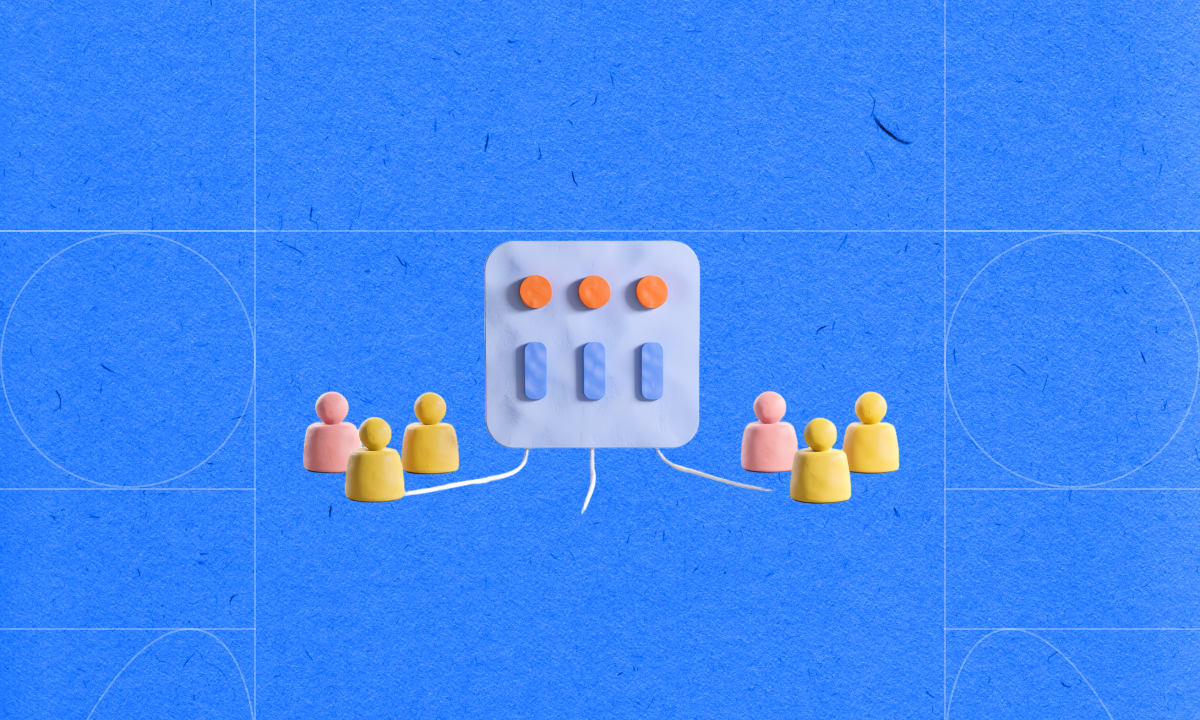






.png)




